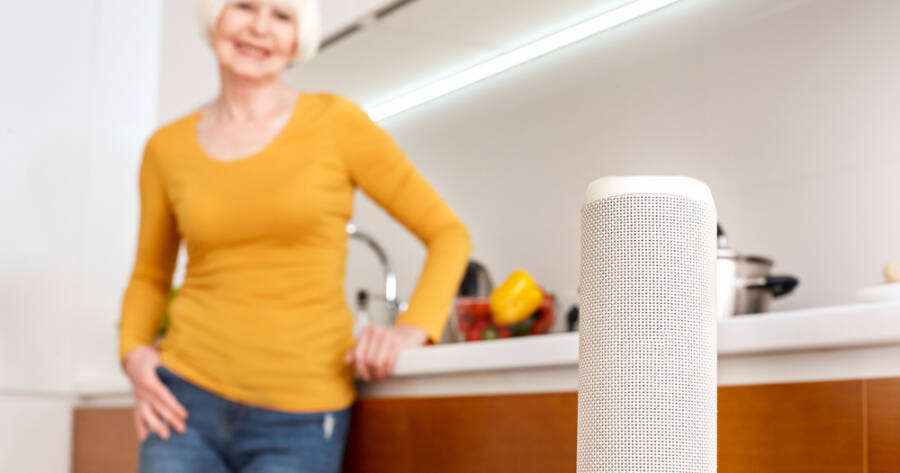More older adults are choosing to stay in their homes as they age, rather than moving into assisted living. Thanks to new advances in remote technology, aging in place is becoming safer, more practical, and more connected than ever. From virtual care to smart home tools, these innovations are reshaping what it means to grow older independently.
Telehealth: Bringing Care to the Living Room
Telehealth has emerged as a major tool for seniors who want to age in place. Virtual appointments allow older adults to connect with healthcare providers from home, cutting down on the need for transportation and long waits. This can be especially helpful for those managing chronic conditions that require regular check-ins.
With a smartphone, tablet, or computer, patients can discuss symptoms, review test results, and get prescriptions without visiting a doctor’s office. This type of care is not only more convenient, but it also helps reduce exposure to illness and minimizes stress, especially for seniors with mobility challenges or anxiety about medical visits.
Smart Home Devices Are Making Homes Safer
Home automation and smart devices are changing how older adults interact with their living space. Tools like voice-activated assistants, smart lighting, fall detection systems, and automated locks are improving daily life and offering peace of mind. These devices help seniors maintain control of their routines while increasing safety.
Many smart devices can send alerts to caregivers or family members if something unusual happens. For instance, a smart sensor can detect if someone hasn’t opened the refrigerator all day or failed to take their medication. While no device can replace human care, these tools add an extra layer of support without invading privacy.
Remote Monitoring for Caregivers and Family
Remote monitoring systems are giving loved ones and caregivers a clearer picture of how seniors are doing at home. Through discreet sensors and apps, it’s now possible to track movement, activity levels, and even sleep patterns. This allows caregivers to identify changes in behavior that might signal a health issue—before it becomes serious.
For seniors who don’t want constant supervision but still appreciate backup, this can be an ideal solution. They can live on their own terms, while family members feel reassured that someone will know if something goes wrong. As a result, it helps bridge the gap between independence and safety.
The Role of Virtual Companionship
Social connection is essential for emotional well-being, especially for older adults who live alone. New technology offers creative solutions to reduce loneliness through virtual companionship. Video calls, social apps designed for seniors, and even AI-powered companions are helping people stay in touch and feel less isolated.
While nothing replaces real human relationships, having access to digital conversation, virtual book clubs, or interactive games can make a big difference in mood and mental health. Some platforms even offer friendly check-ins from volunteers or support workers, helping to create a sense of community from afar.
Online Tools for Managing Daily Tasks
Beyond healthcare and safety, remote technology is also simplifying everyday tasks. Online grocery services, voice-controlled calendars, and telebanking help seniors handle errands from the comfort of home. For those who no longer drive or prefer to avoid busy places, these tools offer freedom and flexibility.
Some apps are even tailored specifically for older users, with larger fonts, simpler layouts, and user-friendly instructions. This makes it easier to stay organized and self-sufficient. When paired with remote tech support or tutorials, these resources empower seniors to keep control over their lives—without having to rely on others for every detail.
Challenges to Keep in Mind
While the rise of remote technology is exciting, it also presents some challenges. Not all older adults are comfortable using new devices, and internet access is not equal in every area. Learning curves can be steep, and some users may need ongoing support to get the most from their tech.
Privacy and data security are also important. Seniors and their families should make sure that devices are secure and that personal information is protected. As with any tool, the goal is to enhance life—not complicate it. With the right guidance and choices, the benefits far outweigh the hurdles.
Looking Ahead: What’s Next?
The future of aging in place will likely continue to evolve with even more advanced tools. Wearable health monitors, AI-driven assistants, and virtual reality therapies are already being tested in some homes. The idea is not to replace human care, but to expand what’s possible—so that more people can live where they feel most comfortable.
Technology will never fully replace human touch, but it can offer solutions that make independent living more realistic for millions. By adapting thoughtfully and focusing on user-friendly design, the next wave of innovation could completely redefine how we age.
New Tools, Familiar Spaces
Remote technology is changing how older adults experience independence. From telehealth to smart homes, these tools support health, safety, and connection—all without requiring a move.
For seniors who value comfort and control, and for families seeking peace of mind, this new wave of innovation offers more than convenience. It offers the chance to age with dignity, in a place called home.

